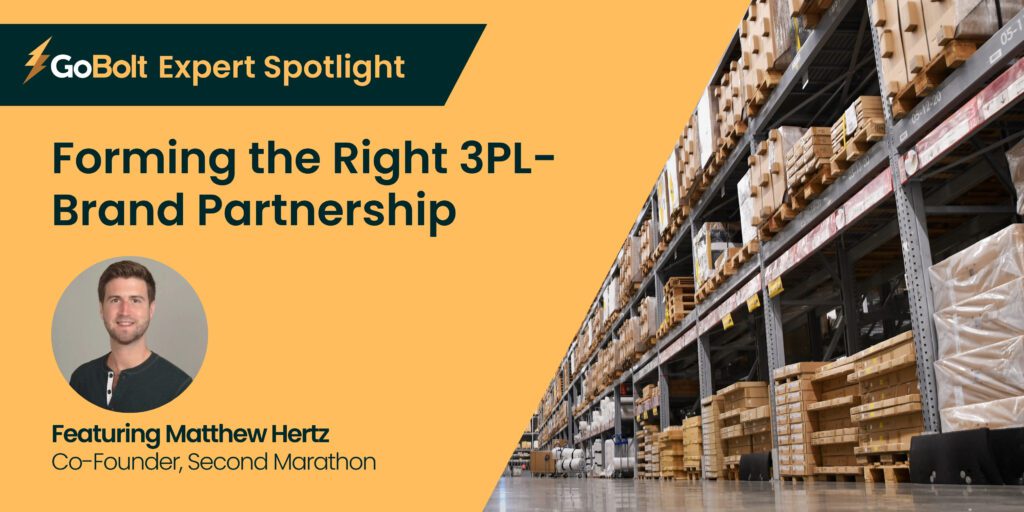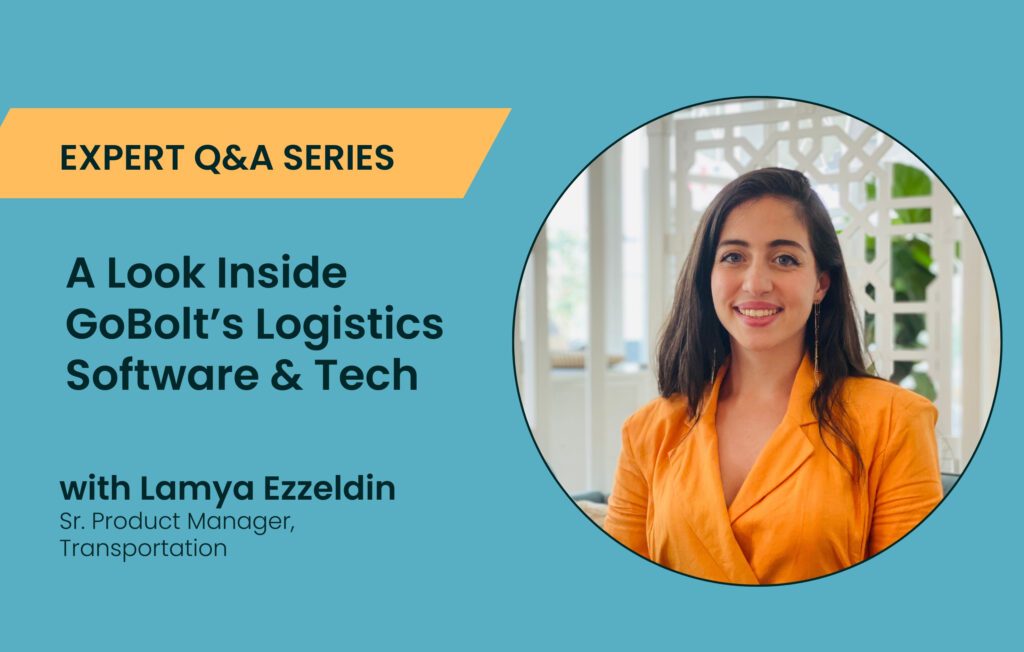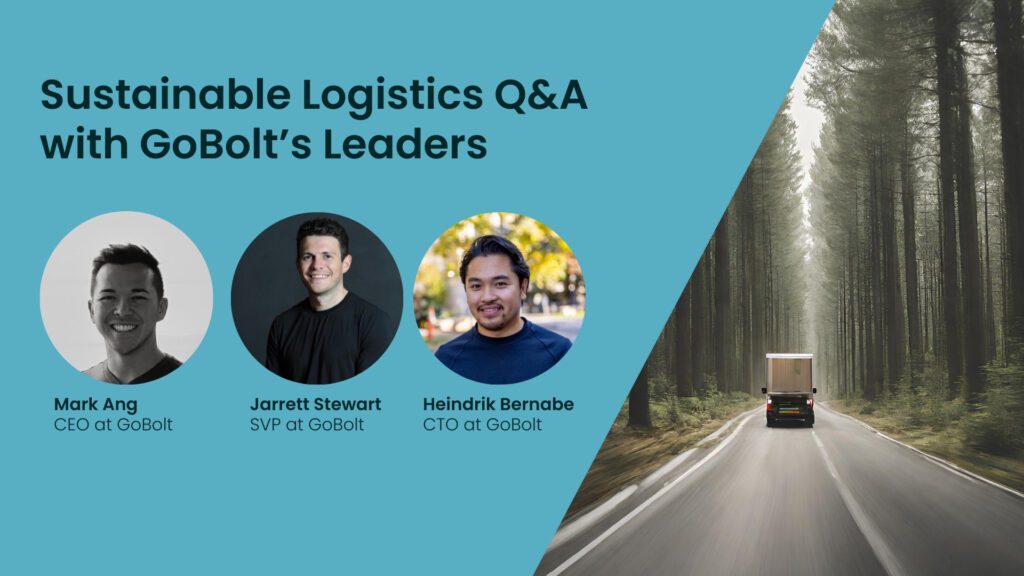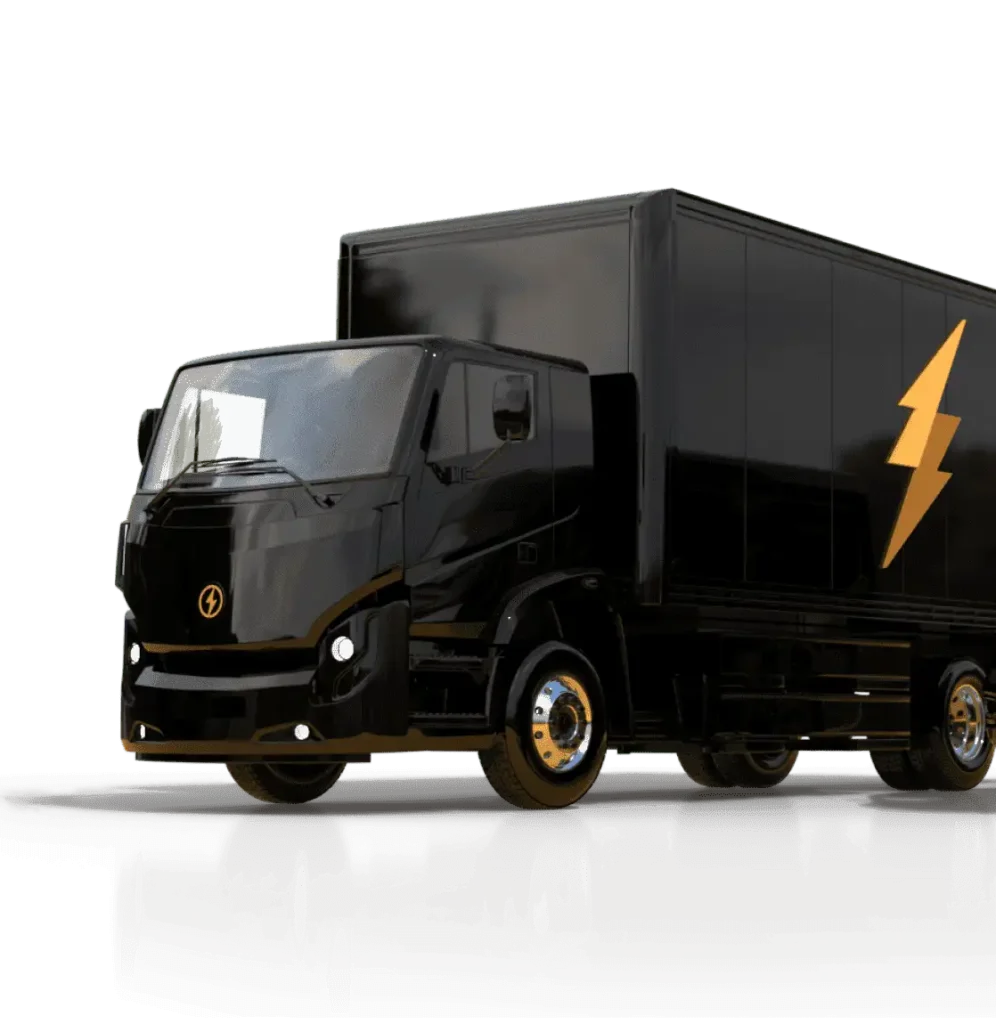Expert Spotlight: Forming the Right 3PL-Brand Partnership, with Matt Hertz, co-founder of Second Marathon
Brands have the daunting task of navigating the expansive landscape of third-party logistics providers (3PL) when seeking support with their logistics. Given the sheer number of 3PL options and the opaque nature of today’s market, it can be difficult for brands to find the best match for their unique business needs.
To discuss the intricacies of matching brands with the right 3PL, GoBolt connected with Matt Hertz, Co-Founder of Second Marathon – a company that helps brands and logistics providers navigate the challenges of ecommerce fulfillment.
What questions do you ask brands when matching them with a 3PL?
MH: First, we ask the basic, table stakes questions covering everything from a brand’s order volume to their SKUs, product category, and sales channels. But by focusing on these factors alone, a 3PL can’t truly address what’s important to a brand. That’s where we dig deeper and ask a brand: How do you like to communicate? Do you want email updates, to jump on a phone call, or connect via Slack? What does account management look like to you? And how often do you anticipate using your account management? Or are you just laissez-faire and take things as they come?
I often say finding the right 3PL is a lot like dating and getting to know a potential partner.
If I had a nickel for every time a brand asked who’s the best 3PL in X, Y, or Z city or state; I get why it matters, but it shouldn’t be the question a brand leads with when seeking out a 3PL partner. It’s too strong of a filter on the market. If brands limit their search in this way, they could land themselves in an ineffective match. In our matchmaking, we attempt to find a good cultural fit between brands and 3PLs.
Based on your experience with brands, what are the consistent factors they all value when going through a sales cycle with 3PLs?
MH: Clear, consistent, and timely communication are the standouts. Going back to the dating analogy, we like to think of the early 3PL partnership days as the dating period. If you start seeing red flags with a 3PL early on, it’s probably not the right fit. Say a brand asks their salesperson or account manager some follow-up questions, but the 3PL sits on them for a few days. This could signal that the 3PL doesn’t view the brand and its partnership as important or that they’re too busy to provide the service a brand anticipates and expects.
Honest, thoughtful communication is an equally important piece of this 3PL matchmaking puzzle. It’s OK to say, “Hey, I don’t have the answer, but I’ll get back to you.” Hopefully, a 3PL isn’t saying that too often, but it’s refreshing to know that they’re seeking out an answer that they may not have immediately at hand. With so many 3PL options out there, many brands have been burned and it often comes down to poor matching right from the start.
What strategies or best practices can 3PLs implement to ensure effective and transparent communication with brands, especially considering the diverse needs and expectations of various businesses?
MH: It’s on 3PLs to create the trust and honesty that brands desire. From what I’ve experienced over the years, brands don’t like talking to a salesperson trying to close a deal. We find the most successful calls between brands and potential 3PL partners include a diverse group of people. In successful calls, we often see a salesperson along with a representative from solutions or operations, and, depending on the size and scale of the 3PL, an executive. This shows brands that they truly matter regardless of the size of their operation.
There’s no question that working with the wrong 3PL can be catastrophic for brands. It can cost them customers, future sales, and a lot of money. And the cost of switching providers and barriers to making an exit is also high. Brands should do their due diligence and find a 3PL partner that prioritizes communication that’s timely, transparent, honest, and consistent.
Are there specific strategies or best practices you recommend between 3PLs and brands to ensure successful partnerships?
MH: It’s key to remember this is a partnership. This is a two-way street. Ask questions, communicate with one another, and familiarize yourself with each other’s businesses. That is, join a brand’s marketing emails. Follow your brand or 3PL partner on their social media channels. Have conversations with the operations lead but also have standing calls with a brand’s marketing team to gain a clear picture and understanding of their promotional calendar and what they’ll need from their logistics team to be successful throughout the year.
Also, brands would benefit from thinking of 3PLs as an extension of the brand, not a separate entity. Often, that’s why partnerships fall apart. Brand leaders should visit their 3PLs warehouse. They don’t have to go weekly, but depending on the size and scale of the business, they should go monthly or quarterly to check in operations. Many brand leaders never set foot in a warehouse. But by visiting their 3PL, brand leaders can gain a deeper understanding and empathy for the logistics work being done.
Lastly, I can’t overstate the importance of effective communication. Often, brands don’t know the right questions to ask and 3PLs aren’t proficient at providing data and information. In these situations, partnerships can turn hostile. By making small tweaks, brands and 3PLs can achieve dynamic, powerful partnerships built on trust, honesty and understanding.
Thanks for your insights, Matt!
Be sure to read Part 1 of this Expert Spotlight series where Matt explores trends, challenges and opportunities brands and 3PLs may face in 2024.







